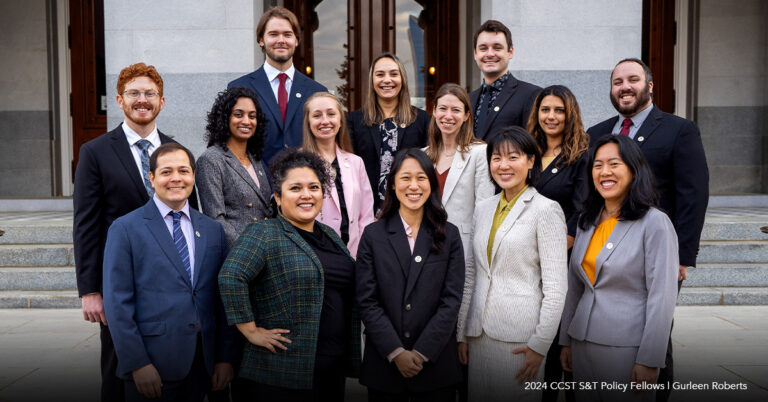Update: Applications for the CCST Science & Technology Policy Fellowship Have Closed
New CEF Report Examines California’s Building and Industrial Efficiency
November 30, 2012 | CCST Newsroom, Press Releases | Contact: M. Daniel DeCillis
 CCST has released the sixth publication in its California’s Energy Future (CEF) project, “California’s Energy Future: Building and Industrial Efficiency“. The CEF project focuses on exploring possibilities for California’s energy strategy through the coming decades, seeking ways the State could meet the mandated reductions of the state’s greenhouse gas (GHG) emissions to 80 percent below 1990 levels by 2050. The new analysis explores both the maximum technical potential and the projected realistic potential of increasing building and industrial efficiencies through phasing in new buildings and equipment and retrofitting older ones.
CCST has released the sixth publication in its California’s Energy Future (CEF) project, “California’s Energy Future: Building and Industrial Efficiency“. The CEF project focuses on exploring possibilities for California’s energy strategy through the coming decades, seeking ways the State could meet the mandated reductions of the state’s greenhouse gas (GHG) emissions to 80 percent below 1990 levels by 2050. The new analysis explores both the maximum technical potential and the projected realistic potential of increasing building and industrial efficiencies through phasing in new buildings and equipment and retrofitting older ones.
“We found that although we couldn’t solve the entire GHG problem through efficiency alone, we expected that outcome,” said lead author Jeffery Greenblatt, a staff scientist in the Environmental Energy Technologies Division (EETD) at the Lawrence Berkeley National Laboratory. “On the positive side, we were able to conclude that although it will be very challenging, substantial levels of additional efficiency and electrification in buildings and industry are possible, with large GHG benefits.”
Because population and economic growth are projected in the business-as-usual case to roughly double the total demand for energy services by 2050, achieving 80% GHG reduction from 1990 levels actually requires a 90% reduction from projected 2050 emission levels. The study concludes that a 90% reduction in energy use is technically possible, but unrealistically demanding, for the residential and commercial buildings sector. Further, a 90% reduction is not technically feasible for the industry or transportation sectors. Consequently, it is not possible to meet the 2050 emission goals solely through efficiency and electrification gains, according to the report. However, substantial levels of GHG savings are still possible through these actions.
Other CEF reports have focused on nuclear power, transportation energy use, electricity from renewable energy and fossil fuels with carbon capture and sequestration, and advanced technologies for achieving deep GHG reductions. The CEF project is funded by the California Energy Commission, the S.D. Bechtel Foundation and the California Air Resources Board; reports have been completed by committees of volunteers from major energy research institutions in the state. The new report, like the earlier ones, notes that no matter what strategy or combination of strategies are employed, achieving California’s emissions targets by 2050 will require significant levels of research, development, invention and innovation.
The next study in the CEF project series, an analysis of specific policy requirements to achieve California’s goals of reduced emissions by 2050 is the focus of a new effort called the California’s Energy Future Policy project, for which work is still ongoing.






